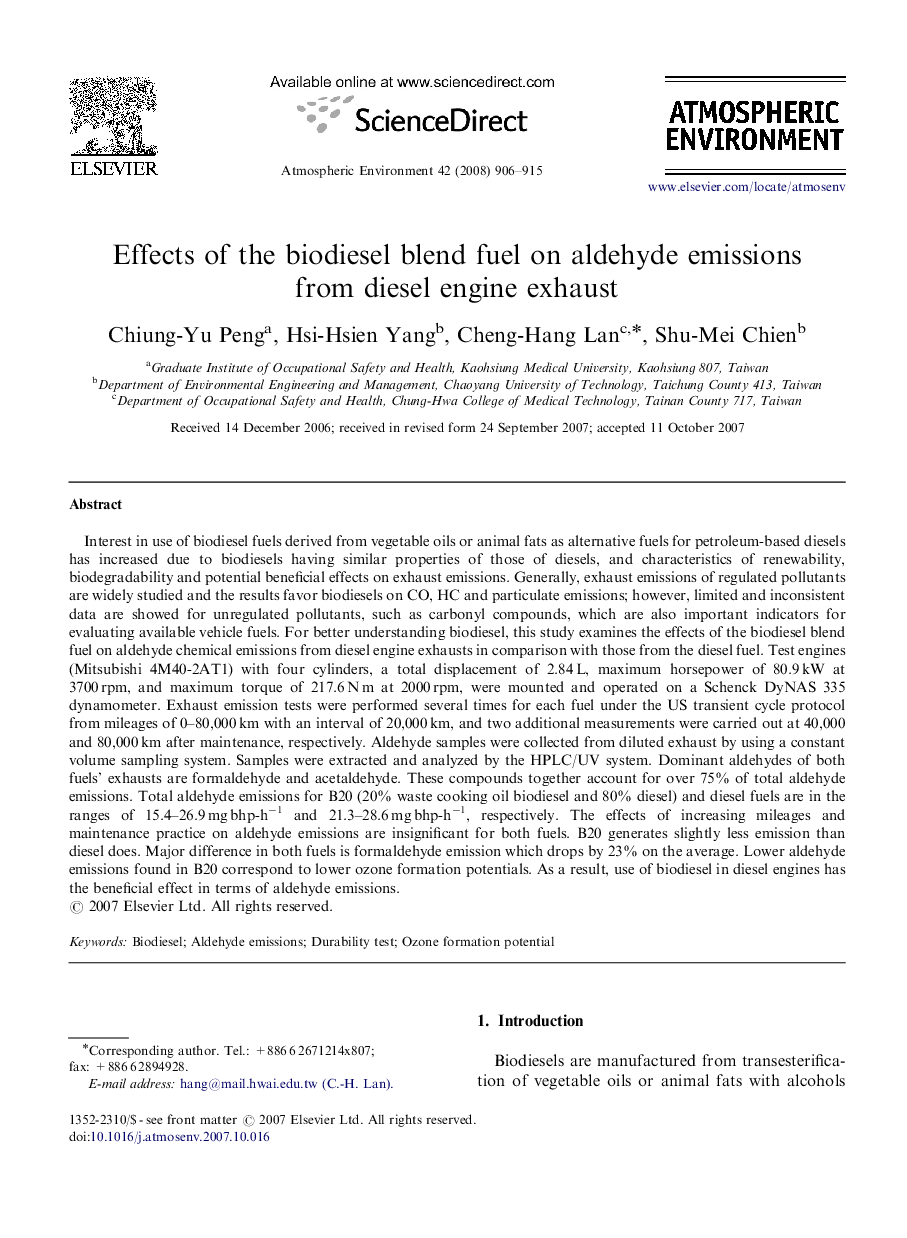| کد مقاله | کد نشریه | سال انتشار | مقاله انگلیسی | نسخه تمام متن |
|---|---|---|---|---|
| 4443175 | 1311181 | 2008 | 10 صفحه PDF | دانلود رایگان |

Interest in use of biodiesel fuels derived from vegetable oils or animal fats as alternative fuels for petroleum-based diesels has increased due to biodiesels having similar properties of those of diesels, and characteristics of renewability, biodegradability and potential beneficial effects on exhaust emissions. Generally, exhaust emissions of regulated pollutants are widely studied and the results favor biodiesels on CO, HC and particulate emissions; however, limited and inconsistent data are showed for unregulated pollutants, such as carbonyl compounds, which are also important indicators for evaluating available vehicle fuels. For better understanding biodiesel, this study examines the effects of the biodiesel blend fuel on aldehyde chemical emissions from diesel engine exhausts in comparison with those from the diesel fuel. Test engines (Mitsubishi 4M40-2AT1) with four cylinders, a total displacement of 2.84 L, maximum horsepower of 80.9 kW at 3700 rpm, and maximum torque of 217.6 N m at 2000 rpm, were mounted and operated on a Schenck DyNAS 335 dynamometer. Exhaust emission tests were performed several times for each fuel under the US transient cycle protocol from mileages of 0–80,000 km with an interval of 20,000 km, and two additional measurements were carried out at 40,000 and 80,000 km after maintenance, respectively. Aldehyde samples were collected from diluted exhaust by using a constant volume sampling system. Samples were extracted and analyzed by the HPLC/UV system. Dominant aldehydes of both fuels’ exhausts are formaldehyde and acetaldehyde. These compounds together account for over 75% of total aldehyde emissions. Total aldehyde emissions for B20 (20% waste cooking oil biodiesel and 80% diesel) and diesel fuels are in the ranges of 15.4–26.9 mg bhp-h−1 and 21.3–28.6 mg bhp-h−1, respectively. The effects of increasing mileages and maintenance practice on aldehyde emissions are insignificant for both fuels. B20 generates slightly less emission than diesel does. Major difference in both fuels is formaldehyde emission which drops by 23% on the average. Lower aldehyde emissions found in B20 correspond to lower ozone formation potentials. As a result, use of biodiesel in diesel engines has the beneficial effect in terms of aldehyde emissions.
Journal: Atmospheric Environment - Volume 42, Issue 5, February 2008, Pages 906–915